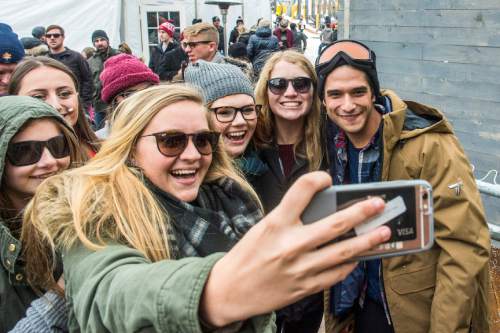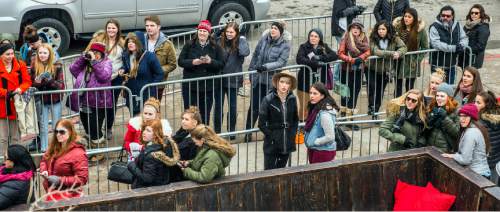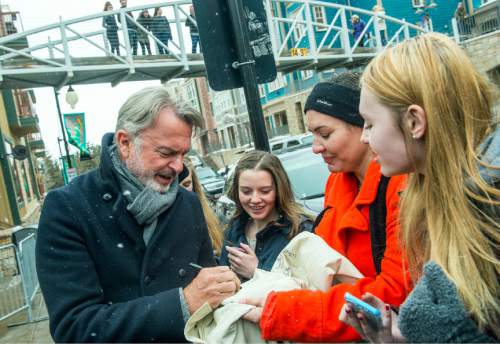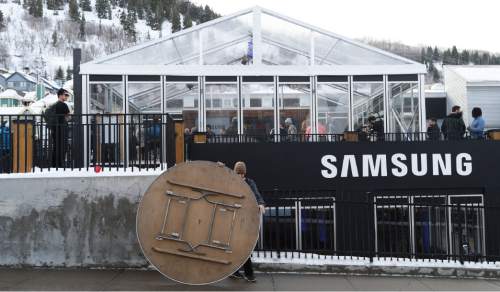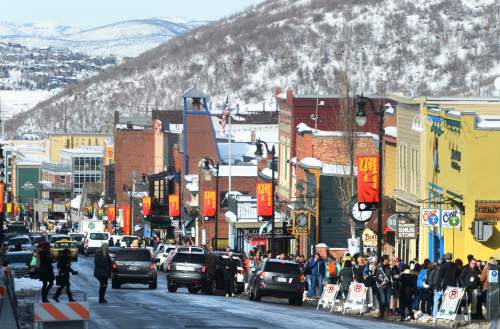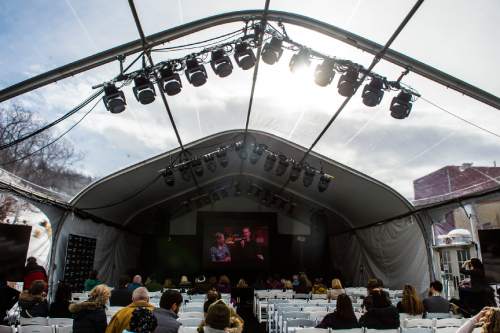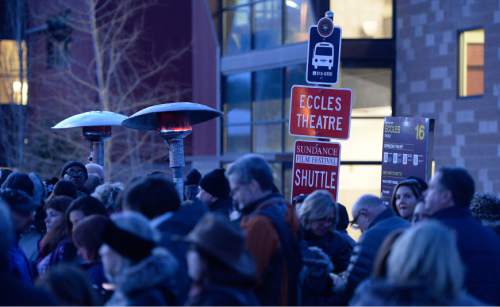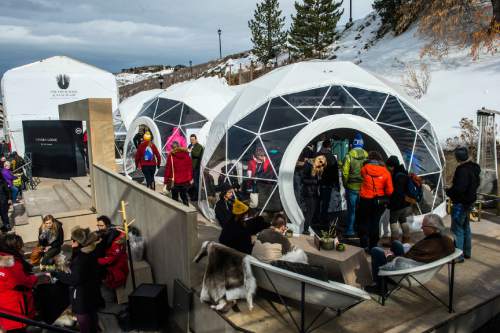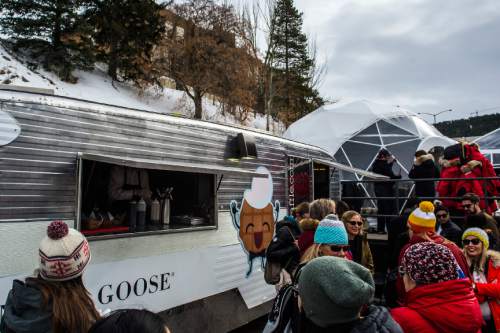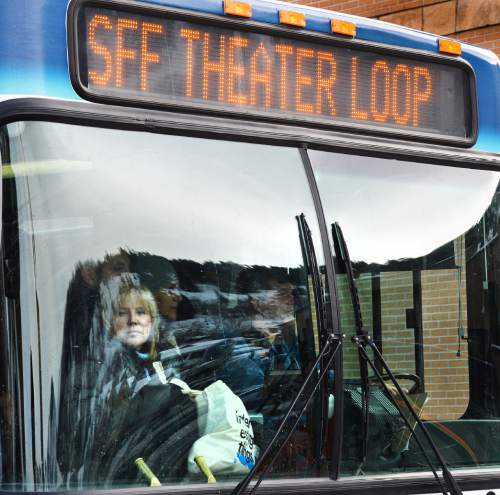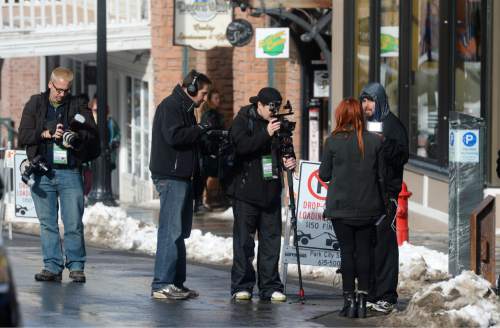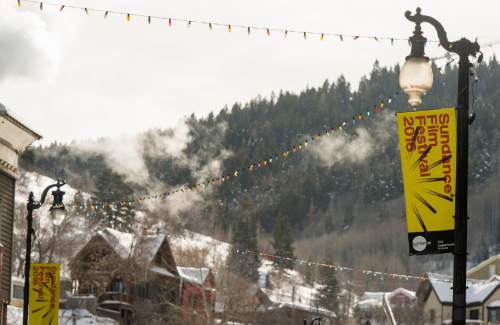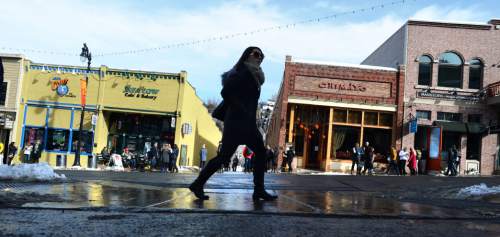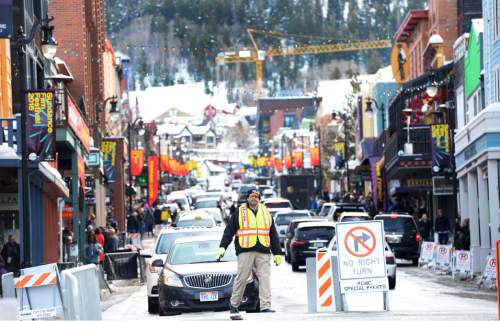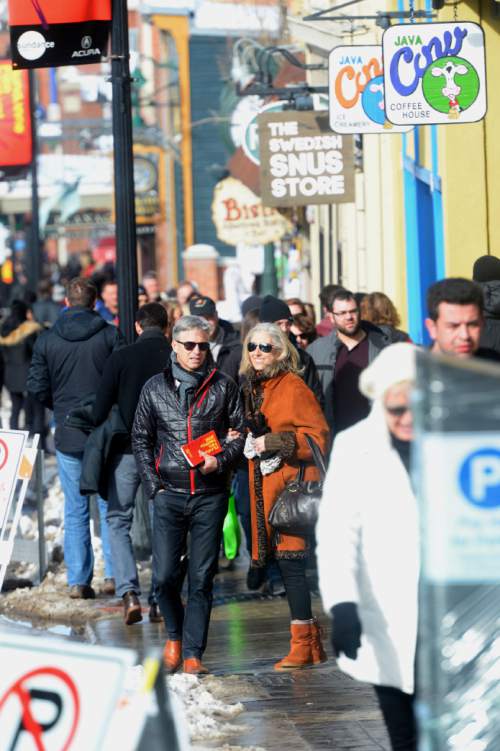This is an archived article that was published on sltrib.com in 2016, and information in the article may be outdated. It is provided only for personal research purposes and may not be reprinted.
The 2016 Sundance Film Festival had a big impact on Utah's economy, according to a new study by University of Utah economists.
How big, though, depends on how one crunches the numbers.
This year's 11-day movie event in Park City and other locations generated $143.3 million in economic activity, according to a study released Wednesday by the Kem C. Gardner Policy Institute at the U.
That's a new metric for Sundance's impact, said Sarah Pearce, managing director of Sundance Institute, the Utah-based arts nonprofit founded by Robert Redford, which stages the festival every January.
"It's a more comprehensive measure of every transaction in the economy," Pearce said.
According to the Gardner Institute, the "economic impact" figure takes into account not only money exchanged from business to business, but also how the employees of those companies benefit.
The raw numbers of the Sundance study show the gross domestic product to the state's economy during the 2016 festival was $72.3 million. That's down from $83.4 million in 2015, as figured by a similar U. study.
A major component of that drop is the amount spent on lodging. In 2016, the survey found festival attendees spent $24.8 million on lodging. That's down 13 percent from the $28.6 million reported in 2015, and 26 percent below the $33.6 million spent in 2014.
Pearce said the reported decrease doesn't jibe with what Park City hotel operators told her — that 2016 was a good year for them. Pearce said the institute is looking at better ways to collect the data, which are taken from surveys of festival attendees.
"People are booking lodging now for January," Pearce said. "If you ask them in January what they spent for lodging, they may not remember."
Festivalgoers spent $16.1 million on food and beverages in 2016, up $1.1 million from 2015. And while they spent a bit less in rental cars ($2.8 million, down from $3.2 million in 2015), they nearly doubled the amount spent on other transportation — $3.1 million, compared to $1.75 million the year before.
The change in transportation figures, Pearce said, may be due to Sundance's message to attendees to avoid renting a car — because of Park City's notorious lack of available parking — and a push for alternatives, like shuttle buses and ride-sharing services. (Uber was a festival sponsor for the first time in 2016.)
Another notable upward number: The amount of state and local taxes collected from festival attendees. For 2016, the study estimates, the festival generated $7,997,000 in tax revenue — compared with $6,966,755 the year before.
"That goes directly back to the state," Pearce said. "That's a real indicator that we're healthy."
In a statement, Utah Gov. Gary Herbert praised the Sundance Film Festival for its "positive impact on Utah's diverse economy."
Other interesting items from the Gardner Institute study:
• All told, 46,660 people attended Sundance in 2016, up nearly 500 from 2015. Of those, 15,398 of them, or 33 percent, were Utahns.
• The bulk of the out-of-staters came from California, New York and Colorado. An estimated 1,863 visitors were from outside the United States, representing 17 nations.
• Among the out-of-state visitors, 24 percent had never been to Utah before, and 53 percent said they would be likely to visit again in the next year. More than 24 percent of the nonresidents said they intended to go skiing or snowboarding in Utah during their stay.
• More than 80 percent of festival attendees have graduated college, and about 43 percent have an annual household income more than $100,000.
• On average, each of those attendees spent $1,139.64 while in Utah and averaged a six-day stay. Nonresidents spent an average of $1,560 per person; Utahns averaged $285 in spending.
• Sundance and festivalgoers supported 1,441 jobs, up from 1,350 in 2015.
• More than 35 percent of festival attendees are under age 35. Pearce attributed that, in part, to Sundance programs aimed at younger audiences, such as its Ignite program (for teen filmmakers) and the Sundance Kids slate.
• The festival set a record for the amount of publicity generated: More than 45,800 stories in print, broadcast and online media coverage. All those stories equate to paid advertising worth $98.9 million.
Twitter: @moviecricket


